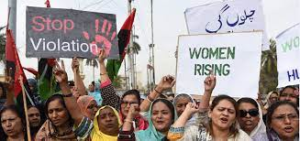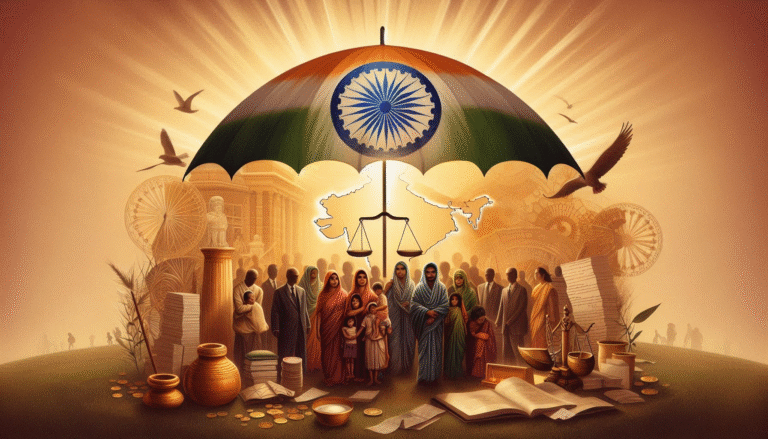
Critical Analysis of Violation of Women Rights in Pakistan

Introduction:
Pakistan is a society burdened by the legacy of colonial rule, and it is currently dominated by the landed aristocracy, bureaucracy, a strong army with ruthless powers and eyes set on taking over the government, and Muslim religious parties that want to dictate all aspects of an individual’s life. ‘
The many Muslim religious parties/groups have strong disputes, which are often violently settled by murdering each other’s members, but they are all in agreement that women are the worst of all crimes, that they are subservient to males, and that they do not have equal rights.
The saying “the home is the best place for women” is well-known and taught. Muslim fundamentalist organisations enjoy the support and patronage of the elite, allowing them to sectarianize society and keep women, who make up 49 percent of the country’s population, in the dark ages.

According to the World Economic Forum, Pakistan ranks third last when it comes to combating violence against women or violence against people of colour. Pakistan has not performed as well as anticipated in its most recent report on gender parity for 2020.
In the most recent gender ranking, the nation ranked 151st out of 153 nations (Achakzai, 2019). According to reports, 93% of Pakistani women report having experienced sexual assault at some point in their life (Kazi, 2017).
In Pakistan, violence against women has grown to be a serious social and legal issue. In order to ensure laws and their implementation, it takes a collaborative effort from important stakeholders including civil society, social science academics, and politicians due to the seriousness of the problem.

Degrading the family name, or “honor,” leads to many women being slain, stoned to death, getting married to older men, or even being murdered. These vicious acts are classified as “crimes against women” by Fisk (2010). This essay looks into several types of gender-based violence and how it may be used to marginalize and exclude women from society.
We contend right away that there is compelling evidence that the number of violent crimes is likely underreported. abuse against women, particularly domestic abuse, frequently goes mostly undetected. In Pakistan’s predominately male society, it is typically not regarded as an act of violence by families, communities, and individuals.
Analysis of the document revealed a trend of high-profile cases. These high-profile incidents, which were reported on consistently for a while, had ties to significant people in politics, families, tribes, and castes. Most occurrences were covered by ordinary news stories and received little attention.
The problem and instances of violence against women are so strongly influenced by sociopolitical and economic variables. For instance, the family, community, tribe, and caste determine the crime of violence to protect “Izzat” and employ masculine strength and authority in the circumstances of love and eloped weddings.
Literature Review:
According to Baden and Reeves (2000), gender discrimination is the systematic favoritism of particular people. Women in this situation are discriminated against and denied their “rights, opportunities, or resources” because of the social construction of gender. In civilizations that are stratified based on gender, treating women unfairly is seen as the norm, and women’s standing and function in society are dependent on their gender.
According to Baden and Reeves, women have a different position when it comes to accessing power and having influence over resources in the institutions of the public sphere, which primarily comprise the home, community, market, and state (p. 7).
In other words, when women demand their rights and positions (resources and power) in various institutional spaces, gender discrimination against women in these institutional sectors also plays a significant part in women’s violence.
As a result, women encounter various types of violence when they assert their rights or criticize the patriarchal ideals and discriminatory gender norms that are now in place. Gender-based violence in this context is defined as “any act or threat by men or male-dominated institutions against women and girls based on gendered social norms,” according to Baden and Reeves (2000).
On this basis, it is asserted that gender-based violence against women occurs in both the public and private domains. Physical, structural, psychological, and sexual forms of violence are all included in the generally accepted concept of gender-based violence. Reeves and Baden also point out the ubiquitous mentality that prevents violence against women, including institutions of law and justice like the judiciary and police.
Discussion:
Pakistani women are in a terrible condition, and the little laws safeguarding them in the nation merely provide security on paper. The 2006 women’s rights law hasn’t improved the situation for women, particularly in regions where feudal and tribal systems are common or where Muslim fundamentalists predominate.
The ‘war on terror’ has also led to an upsurge in violence and discrimination against women. 112,162 incidences of violence against women have been documented since 9/11 and the War on Terror, according to news reports and data gathered from various women’s organizations.
Similar to this, the current Women’s Protection Act has not been able to stop violent crimes against women who are still the targets of honor murders. 115 women were physically abused by the police in the provinces, and at least 300 women were jailed on various petty charges. State brutality against women also persisted at this time.
This demonstrates unequivocally that just passing legislation does not stop breaches of human rights. The fundamental issue is the breakdown of the rule of law and the major flaws in the legal system. The scenario in Pakistan, where some areas do not regard women to be human beings and where being a woman may be deadly, shows that discrimination against women is not only a legal issue but also a cultural issue with deeply ingrained mentalities.
Laws alone cannot safeguard women against centuries-old customs. This can only be altered by a thorough evolution that includes dismantling jirgas, effectively enforcing the rule of law throughout the nation, and reforming the judiciary and the police to end impunity and fairly punish offenders. This requires a strong political will.
Additionally, structural adjustments must be undertaken, such as increasing the number of women in state and public posts. These are but a few steps taken to free Pakistani women from outdated tribal customs.
Conclusion:
In spite of several laws and ordinances the Pakistani government has approved, the publication claims that every year innocent women and girls are killed for ‘dishonouring’ their families. All of Pakistan’s provinces are rife with gender-based violence or violence against women. The problem, which may be considered a mass crime, has become more serious as a result of COVID-19.
In this article, we make the case that the state must guarantee gender justice through effective judicial order and social justice initiatives based on our moral and political research agenda that argues for the preservation of women’s rights in Pakistan.
We contend that the state law and judicial system has a multifaceted responsibility to achieve a larger social justice agenda in Pakistani society in our moral and political research agenda to support gender equality. Jirga law is just one example of the tribal and feudal society’s poor social justice system and patriarchal framework, both of which contribute to violence against women.
Last but not least, we recognize that the gender mainstreaming approach is required for the successful execution of the policies and programs aimed at improving the socioeconomic condition of women and girls, particularly the changes to the education sector and the education of girls in remote villages and cities.
To represent the voice of women, a broad-based, gender-sensitive advocacy strategy should be developed and put into action. Particular attention should be devoted to addressing gender discriminatory practices against women resulting from cultural and customary practices, both at the policy level and throughout implementation.
All of the society’s stakeholders, including students, teachers, health professionals, law enforcement officers, community leaders, lawyers, the media, and civil society, should be included in this widespread campaign to advocate for and raise awareness of gender equality. This is necessary for the democratic governance of society.
References:
Achakzai, J. (2019, December 19, 2019). Pakistan fares badly on gender gap index. The News International Retrieved from https://www.thenews.com.pk/print/585465- pakistan-fares-badly-on-gender-gap-index Aurat Foundation. (2015). Annual Report 2014. Retrieved from https://www.af.org.pk/ PDF/VAW%20Reports%20AND%20PR/VAW%202014.pdf
Baden, S., & Reeves, H. (2000). Gender and development: Concepts and definitions: Bridge. Brohi, N. (2016). Women, violence and jirgas. Islamabad, Pakistan.
Dawn Reporter. (2008, April 11, 2008). Two women raped for ‘sin’ of others. Dawn.com. Retrieved from https://www.dawn.com/news/297606/two-women-raped-for-sinof-others
Fisk, R. (2010). The crimewave that shames the world. The Independent, 7. Hadi, A. (2017). Patriarchy and gender-based violence in Pakistan. European Journal of Social Science Education and Research, 4(4), 297-304.
Weiss, A. (2014). Interpreting Islam, modernity, and women’s rights in Pakistan: Springer.







